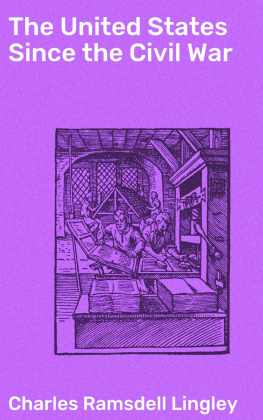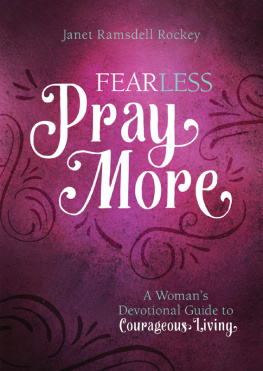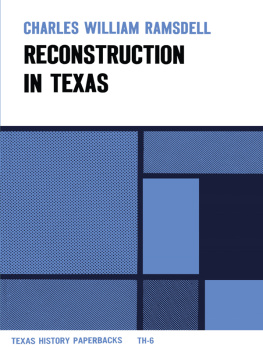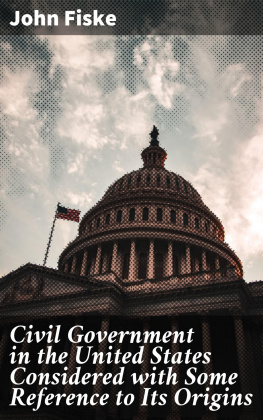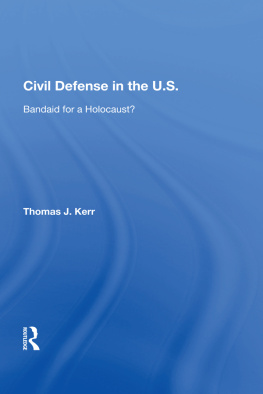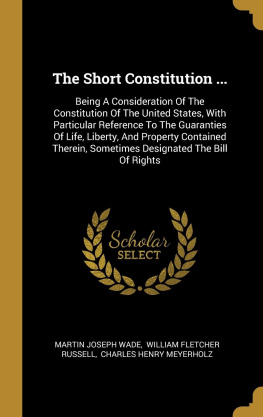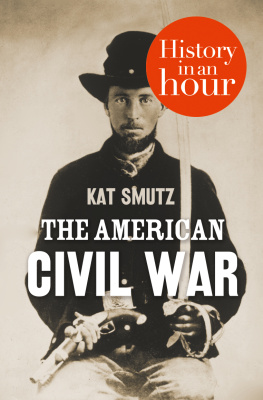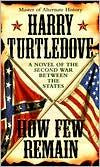Charles Ramsdell Lingley
The United States Since the Civil War
Published by Good Press, 2019
EAN 4064066122171
PREFACE
Table of Contents
To write an account of the history of the United States since theCivil War without bias, without misstatements of fact and without theomission of matters that ought to be included, would be to perform amiracle. I have felt no wonder-working near me. I can claim only tohave attempted to overcome the natural limitations of having beenbrought up in a particular region and with a traditional political,economic and social philosophy. I have tried to present as many sidesof every question as the limitations of space permitted and to looksympathetically upon every section, every party and every individual,because the sympathetic critic seems to me most likely to discover thetruth.
It used to be believed that history could not be written until atleast half a century had elapsed after the events which were to bechronicled. It is of course true that only after the lapse of timecan students gain access to ample documentary material, rid themselvesof partisan prejudice and attain the necessary perspective. Unhappily,however, the citizen who takes part in public affairs or who votes ina political campaign cannot wait for the labors of half a century. Hemust judge on the basis of whatever facts he can find near at hand.Next to a balanced intelligence, the greatest need of the citizen inthe performance of his political duties is a substantial knowledgeof the recent past of public problems. It is impossible to give asensible opinion upon the transportation problem, the relation betweengovernment and industry, international relations, current politics, theleaders in public affairs, and other peculiarly American interestswithout some understanding of the United States since the Civil War. Ihave tried in a small way to make some of this information convenientlyavailable without attempting to beguile myself or others into thebelief that I have written with the accuracy that will characterizelater work.
Some day somebody will delineate the spiritual history of Americasince the Civil Warthe compound of tradition, discontent,aspiration, idealism, materialism, selfishness, and hope that mark thefloundering progress of these United States through the last halfcentury. He will read widely, ponder deeply, and tune his spirit withcare to the task which he undertakes. I have not attempted this phaseof our history, yet I believe that no account is complete without it.
I have drawn heavily on others who have written in this fieldAndrews,Beard, Paxson and Peck, and especially on the volumes written for theAmerican Nation series by Professors Dunning, Sparks, Dewey, Latanand Ogg. Haworth's United States in Our Own Time, 18651920, wasunfortunately printed too late to give me the benefit of the author'swell-known scholarship. Many friends have generously assisted me. Mycolleagues, Professors F.A. Updyke, C.A. Phillips, G.R. Wicker, H.D.Dozier, and Malcolm Keir have read the manuscript of individualchapters. Professor E.E. Day of Harvard University gave me his counselon several economic topics. Professor George H. Haynes of the WorcesterPolytechnic Institute, Professor B.B. Kendrick of Columbia University,Professor W.T. Root of the University of Wisconsin, and Professors L.B.Richardson and F.M. Anderson of Dartmouth College have read the entiremanuscript. Officials at the Dartmouth College Library, the ColumbiaUniversity Library, and the Library of Congress gave me especialfacilities for work. Two college generations of students at Dartmouthhave suffered me to try out on them the arrangement of the chapters aswell as the contents of the text. Harper and Bros. allowed me to use amap appearing in Ogg, National Progress, and D. Appleton and Co. havepermitted the use of maps appearing in Johnson and Van Metre,Principles of Railroad Transportation; A.J. Nystrom and Co. and theMcKinley Publishing Co. have allowed me to draw new maps on outlinescopyrighted by them. At all points I have had the counsel of my wifeand of Professor Max Farrand of Yale University.
CHARLES R. LINGLEY.
Dartmouth College, June 14, 1920.
CHAPTER
I RECONSTRUCTION AND ITS AFTERMATH II IN PRESIDENT GRANT'S TIME III ECONOMIC FOUNDATIONS OF THE NEW ERA IV POLITICAL AND INTELLECTUAL BACKGROUND OF THE NEW ISSUES V THE NEW ISSUES VI THE ADMINISTRATION OF RUTHERFORD B. HAYES VII THE POLITICS OF THE EARLY EIGHTIES VIII THE OVERTURN OF 1884 IX TRANSPORTATION AND ITS CONTROL X EXTREME REPUBLICANISM XI INDUSTRY AND LAISSEZ FAIRE XII DEMOCRATIC DEMORALIZATION XIII THE TREND OF DIPLOMACY XIV THE RISE OF THE WAGE EARNER XV MONETARY AND FINANCIAL PROBLEMS XVI 1896 XVII REPUBLICAN DOMINATION AND WAR WITH SPAINXVIII IMPERIALISM XIX THE BEGINNING OF A NEW CENTURY XX THEODORE ROOSEVELT XXI POLITICS, 19081912 XXII ECONOMIC AND POLITICAL TENDENCIES SINCE 1896XXIII LATER INTERNATIONAL RELATIONS XXIV WOODROW WILSON XXV THE UNITED STATES AND THE WORLD WAR
INDEX
MAPS AND DIAGRAMS
Table of Contents
The growth of the United States from 1776 to 1867
Popular vote in presidential elections, 1868 to 1896
Economic interests, 1890
Relative prices, 1865 to 1890
The New West
Railroad mileage, 1860 to 1910, in thousands of miles
Map of the United States showing railroads in 1870
Map of the United States showing railroads in 1890 (The maps showingthe railroads are from Johnson and Van Metre, Principles of RailroadTransportation, by courtesy of the publishers, D. Appleton & Co.)
Financial operations, 1875 to 1897, in millions of dollars
Total silver coinage, 1878 to 1894, in millions of dollars
Net gold in the treasury, by months, January, 1893, to February,1896, in millions of dollars
The presidential election of 1896
The Philippines
The Spanish-American War in the West Indies
Campaign about Santiago
The chief foreign elements in the population of the United States
The cost of food, 1900 to 1912
Morgan-Hill railroads as listed shortly after 1900
Daily newspaper circulation, 1918
Election of 1904 by counties
Caribbean interests of the United States
Election of 1916 by counties
The Western Front
Strength of the American Expeditionary Force, July 1, 1917, to
November 1, 1918
The United States1920
The cost of food, January, 1913, to January, 1920
CHAPTER I
Table of Contents
RECONSTRUCTION AND ITS AFTERMATH
Abraham Lincoln in the presidential chair was regarded by many of thepoliticians of his party as an "unutterable calamity"; and while thenews of Lincoln's assassination was received with expressions of genuinegrief, the accession of Vice-President Andrew Johnson was looked upon asa "Godsend to the country." As the Civil War came to a close, Lincolnopposed severe punishments for the leaders of the Confederacy; he urgedrespect for the rights of the southern people; he desired to recognizethe existence of a Union element in the South, to restore the states totheir usual relations with as little ill-feeling as possible, and in therestoration process to interfere but little with the normal powers ofthe states. Johnson, on the contrary, "breathed fire and hemp.""Treason," he asserted over and again, "should be made odious, andtraitors must be punished and impoverished. Their great plantations mustbe seized, and divided into small farms and sold to honest, industriousmen." For a time it seemed that the curtain would go down on the tragedyof Civil War only to rise immediately on the execution of theConfederate leaders and the confiscation of their property. A large andactive group of Washington politicians believed in the necessity of astern accounting with the "rebels." Lincoln's gentleness seemed to thesebitter northerners like a calamity; Johnson's vindictiveness like aGodsend to the country. In the conflict between the policy of clemencyand the policy of severity is to be found the beginning of the period ofreconstruction.


